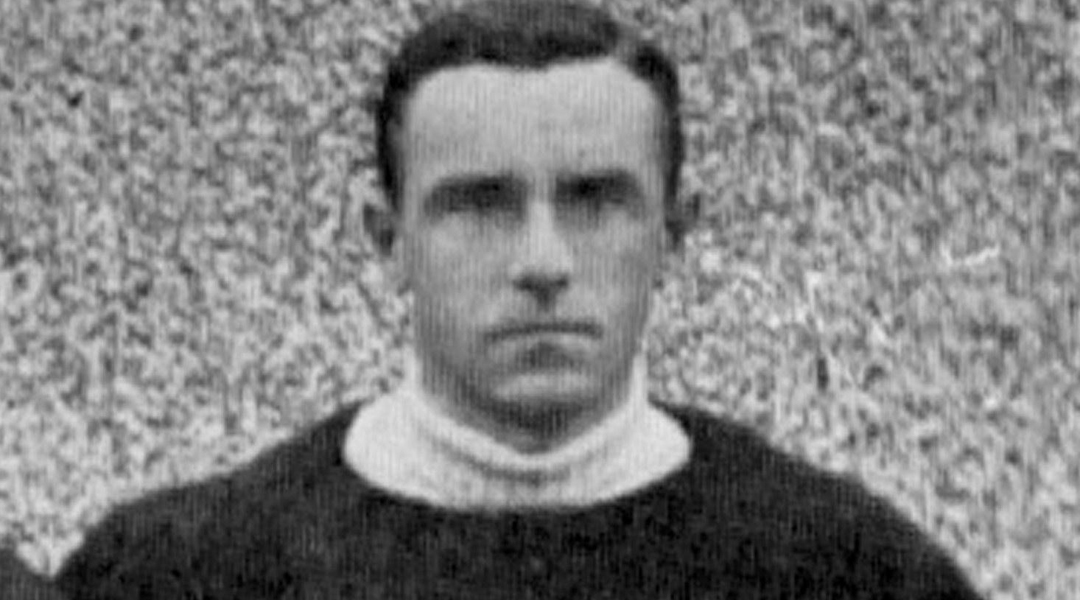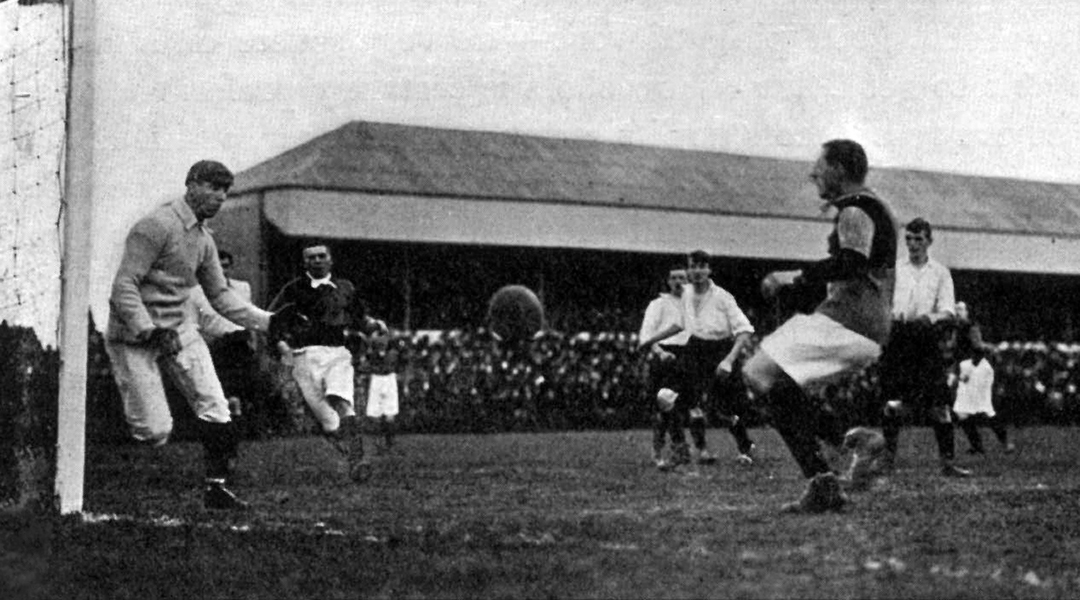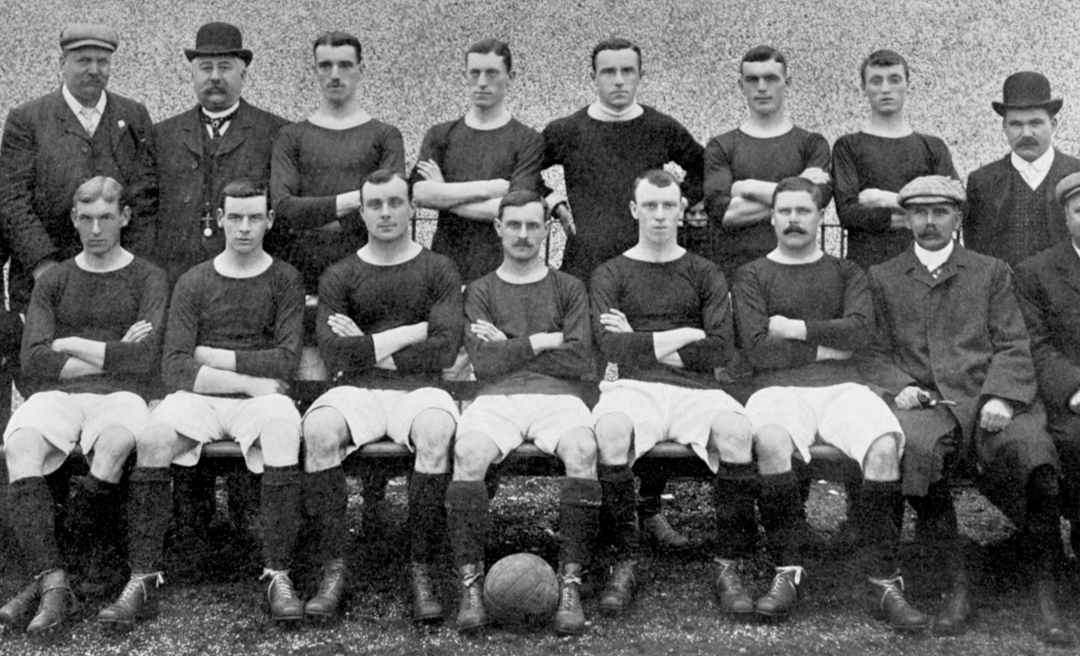Leigh Roose: The 'reckless', controversial war hero who kept goal for Arsenal
October 7, 2016 marks the centenary of Roose's death. Jon Spurling remembers the maverick goalkeeper who enchanted early 20th-century football

Goalkeeper Leigh Roose – an early 20th-century cross between the theatrical Bruce Grobbelaar and the physically intimidating Peter Schmeichel – was one of football's most colourful and controversial characters. Roose's distinctive playing style, natty attire (padded knee bandages, twin peaked cap) and occasionally scandalous social life made him, according to the Daily Mail in 1905, London's second-most eligible bachelor behind cricket legend Jack Hobbs.
Not bad for a player who, for several years, had appeared more likely to commit himself to a career in bacteriology, after studying medicine for a short period at King's College London. His Presbyterian minister father, Richmond Leigh Roose, wanted him to pursue a "respectable profession" – but his single-minded son had other ideas. At 6ft 1in and weighing around 13 stone, the physically imposing Roose was ideally built for the position of goalkeeper, and in the rough-and-tumble Edwardian game, with the shoulder charge part and parcel, he deployed every ounce of his strength to flourish in between the sticks.
"Wondrous Hercules"
Roose first captured spectators' attention with Aberystwyth Town, with whom he won the 1900 Welsh Cup Final. Throughout his career, Roose's aura always attracted the attention of eminent writers – local and national – and following Aberystwyth's win over the Druids, Welsh historian Thomas Richards referred to him as "this wondrous Hercules".
He became a crowd favourite as he talked to supporters and performed gymnastic displays from his crossbar during breaks in play
His reputation grew during his 147-game league career with Stoke, which was split over two spells; keeping 40 clean sheets between 1901 and 1906 was noteworthy, as the Potters were regularly hovering around the relegation zone. He also turned out for Everton, whom he helped reach the 1905 FA Cup Semi-Finals, and Sunderland, where his safe handling helped the club finish as Division One runners-up on two occasions.
He made a combined 23 appearances for Aston Villa and Woolwich Arsenal (with whom he ended his career), where he became a crowd favourite as he talked to supporters and performed gymnastic displays from his crossbar during breaks in play.
In an era before players wore numbers on their shirts, he demonstrated Vaudevillian panache by acknowledging the applause of the crowd as he trotted onto the pitch, and accepted the acclaim of fans after saving penalties.
Get FourFourTwo Newsletter
The best features, fun and footballing quizzes, straight to your inbox every week.

Roose's bravery was legion, and he later acknowledged that his willingness to risk injury set him apart from other stoppers. Following Stoke's visit to Plumstead in 1904, Woolwich Arsenal goalkeeper Jimmy Ashcroft noted: "There was a scrimmage in goal and Roose was down on the ball like a shot with a heap of Arsenal and Stoke players on top of him. Presently, from out of the ruck emerged Roose clinging to the ball, which he promptly threw away up the field. I'll be certain that the thrill of triumph which went through him was ample compensation for any hard knocks he received."
The Welshman also relished starting his team’s attacks, in the days when goalkeepers could handle the ball anywhere in their own half. He’d regularly carry the ball towards his opponents in the manner of a rugby full-back, but in 1912 the rules were changed – allegedly to curb Roose’s forward thinking – and keepers were restricted to handling the ball inside their own box. His fearlessness in the heat of battle was seen as a blueprint for his goalkeeping contemporaries, although physical injuries did take their toll, and he twice broke his wrist while with Sunderland.
He’d regularly carry the ball towards opponents in the manner of a rugby full-back, but in 1912 the rules were changed – allegedly to curb Roose’s forward thinking
Roose was considered the finest penalty stopper of his era. In dramatic prose, Welsh historian Thomas Richards described one of his saves for Aberystwyth against Glossop North End in an FA Cup clash: "I have always believed that Roose grew to his full height as a man in the purgatorial crisis of a penalty... the ball travelled like a bolt from the foot of the penalty-taking forward, and in the blink of an eyelid, revolution, a thump, and the ball landed of the Buarth."
Aberystwyth historian Geraint Jenkins wrote in 2000 that Roose had "sharp eyesight, startling reflexes, competitive instinct and reckless bravery... an extraordinarily daunting opponent".
Reckless and controversial
He was once banned by the FA for 14 days after punching a Sunderland official
Roose's red-blooded approach and rebellious nature garnered criticism and censure from the authorities.
On his international debut for Wales he sprinted out of his area, shoulder-charging an Irish player and knocking him headlong into the crowd. The Welsh FA informed him that they "disapproved of such a reckless display".
It’s fair to say that Roose – who owned an apartment in London and bought Savile Row suits – thought little of club directors, and was once banned by the FA for 14 days after punching a Sunderland official. He remained steadfastly amateur at a time when the FA was attempting to rebrand football as a professional sport, often played practical jokes on his team-mates and enjoyed a scandal-ridden relationship with married music hall star Marie Lloyd, famous for singing the song My Old Man Said Follow The Van.

As an amateur he couldn’t actually be paid for playing, but rumour had it that he received more in expenses than many of his team-mates earned professionally. Roose’s biographer Spencer Vignes suggests the FA’s concerns about his financial dealings may have been merited and cites the example of how, when Roose missed his train from Euston for a 1906 Stoke match away to Aston Villa, he commandeered his own locomotive and carriage, sending his whopping £31 bill to the Stoke directors.
In 1916, four years after his football career ended, he joined the Royal Fusiliers as a Private aged 38. A renowned grenade thrower (unsurprising given that he could throw an old-style football beyond the halfway line), he was awarded the Military Medal on the first occasion he saw action.

With his ability to cajole and inspire those around him, he was rapidly promoted to the rank of Lance Corporal, but was killed at the Battle of the Somme in October 1916.
Although the precise manner and location of his death is disputed, the remarkable Leigh Roose’s place in the pantheon of singular and distinguished British goalkeepers has never been in doubt.
Jon Spurling is a history and politics teacher in his day job, but has written articles and interviewed footballers for numerous publications at home and abroad over the last 25 years. He is a long-time contributor to FourFourTwo and has authored seven books, including the best-selling Highbury: The Story of Arsenal in N5, and Get It On: How The '70s Rocked Football was published in March 2022.

